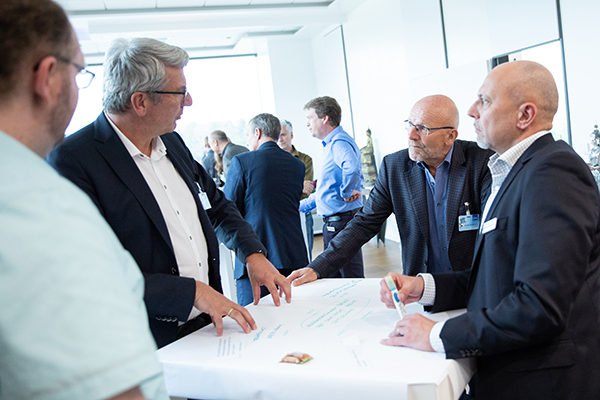
|
3D PDF Customer Experience Day: a platform for sharing information and experienceBy Harald Blümel PROSTEP organized its first 3D PDF Customer Experience Day, held at PERCUMA, an event location in Eppstein, Germany, with the aim of promoting an exchange of information and experience relating to 3D PDF technology. Customers and interested parties had the opportunity to learn first-hand about the potential benefits of 3D PDF-based applications and talk to the speakers and other participants in a relaxed atmosphere. 
The 3D PDF Customer Experience Day focused on the experience of companies that use PROSTEP's service content solutions for a variety of different applications in the product lifecycle and in some cases achieve significant savings. ATOTECH Deutschland, for example, generates the multilingual spare parts catalogs for its electroplating systems largely automatically. This has not only dramatically reduced the effort involved in preparing the documents but has also made it easier for customers and their own service engineers to identify the spare parts that they need. This means that today hardly any incorrect orders are placed. Versatile technology André Hieke's presentation on the use of 3D PDF in manufacturing at Siemens LDA in Nuremberg illustrated the versatility of the technology. The manufacturer of large electric motors and converters initially introduced our service content solution to automate the creation of customer-specific offer documents in the pre-sales phase. Due to its success, the application is now also used for the paperless provision of manufacturing documents. Siemens LDA originally wanted to replace the drawings with JT models containing product manufacturing information (PMI) annotations, but these were too awkward to handle. The advantage of the 3D PDF documents is that they can be displayed on touch screens and are easy for technicians to understand, said Hieke. In the future, Siemens LDA also plans to use the solution to integrate measuring machines in quality assurance. 
Timo Trautmann from PROSTEP used additional practical application examples to illustrate the data-related potential that can be exploited using 3D PDF. KHS, a manufacturer of filling and packaging systems, for example, expects 3D PDF-based assembly planning to result in considerable time savings. Thanks to a database containing the most common assembly activities, costs and times, it enables not only more efficient and, more importantly, earlier planning but also the automatic derivation of assembly instructions in multiple languages. In addition, individual assembly steps can be animated interactively and displayed using the standard Acrobat Reader. New possibilities in the web In one of the two live demonstrations, Andreas Vogel from Theorie3.De showed how easy it is to animate 3D PDF documents or embedded 3D models using 3D PDF Pro to create virtual assembly instructions. In the second demonstration, Timo Trautmann used the example of a service content portal to show how 3D spare parts catalogs can be published in the web in HTML5 format. The portal now also gives service engineers the option of entering comments that are linked to the HTML5 file and stored on a cloud server. As Trautmann pointed out, this is a lean solution that does not require a separate database. PROSTEP will continue to develop the functionality of its 3D PDF-based service content solutions. The roadmap envisages, for example, the capability to enrich the maintenance portal with sensor data gathered during operation in order to provide support for digital twin applications. Kristian Haizmann from INSYS MICROELECTRONICS explained to the participants how integration in the real world of production will be implemented. The company manufactures routers for industrial data communication in which the digital twin can be mapped in order to support predictive maintenance by evaluating sensor data locally (edge computing) for example. 
In the Worldcafé, the participants discussed fundamental questions such as the future of the documents and the purpose of 3D in the service department. Regardless of the technology employed, the use of 3D information in the service department often fails due to the companies' lack of resources and the users' lack of know-how when it comes to data preparation, concluded Andreas Vogel. Peter Pfalzgraf from PROSTEP summarized the results of his panel discussion as follows: "As long as the 3D master is not yet complete, documents will still be needed. They play a key role for archiving in particular." 
|
|
| © PROSTEP AG | ALL RIGHTS RESERVED | IMPRESSUM | DATENSCHUTZERKLÄRUNG | HIER KÖNNEN SIE DEN NEWSLETTER ABBESTELLEN. |

